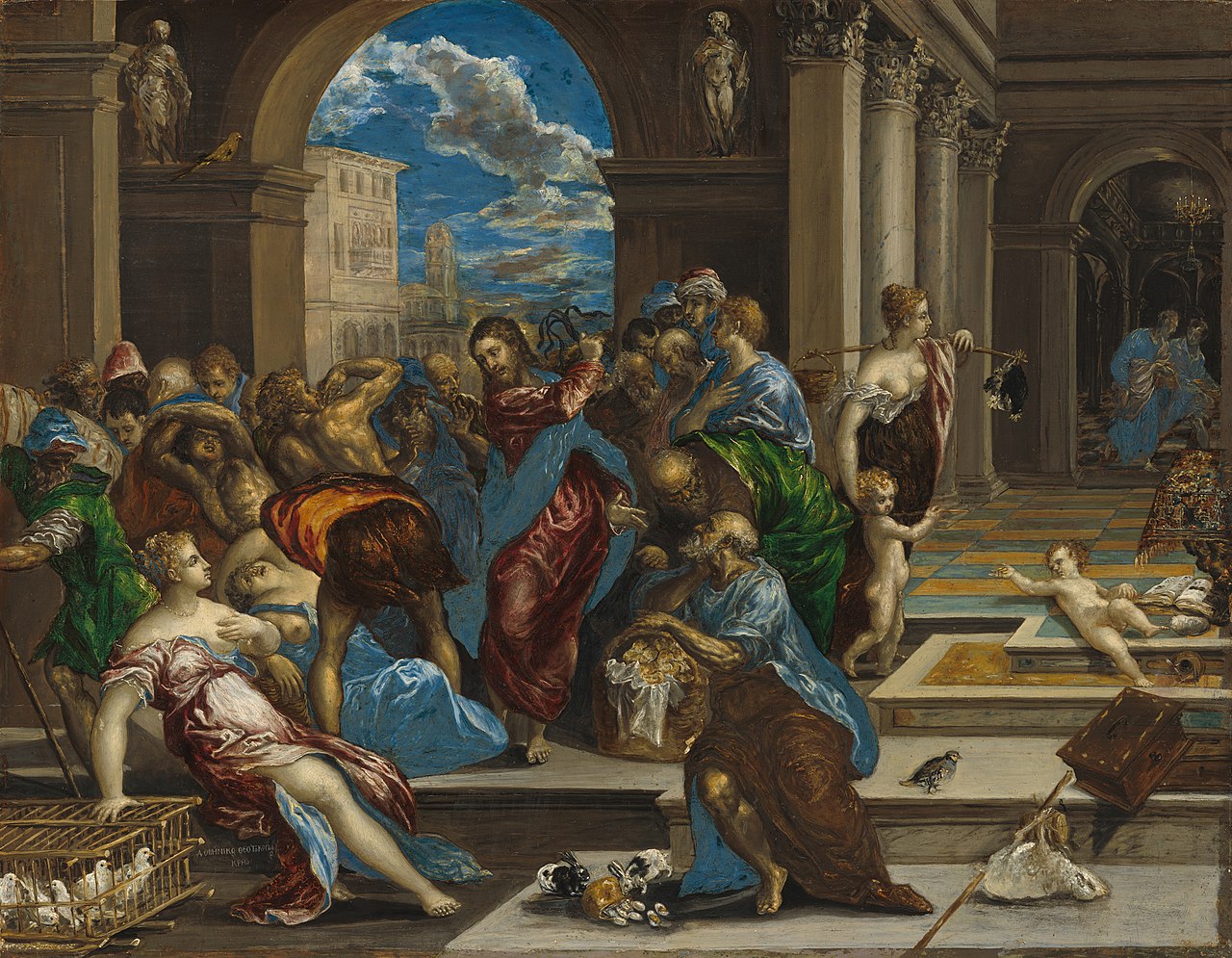Christ Driving the Money Changers from the Templ by El Greco, Matthew 21:12-17, Bible.Gallery

Christ Driving the Money Changers from the Templ created 1568 nad was completed in 1568 Its dimension is 83cm wide and 65cm high and it was drawn with oil on panel style.
Artwork Description
"Christ Driving the Money Changers from the Temple" is a painting crafted by El Greco in 1568 and is currently housed in the National Gallery of Art in Washington, D.C., United States. This artwork vividly portrays the event known as the Cleansing of the Temple, a significant episode in the life of Christ.
Three other renditions of this painting exist, along with a faithful reproduction displayed in the National Gallery in London. Recent scholarship in the realm of visual arts has come to acknowledge this replica's authenticity. Two of these versions, alongside the one on loan from Madrid, bear the title "Purification of the Temple." The rendition at the National Gallery in Washington is titled "Christ Cleansing the Temple." The painting holding this specific title belongs to the Minneapolis Institute of Art and distinguishes itself from the other depictions of this renowned Christian scene.
In terms of analysis, many experts regard it as El Greco's masterpiece from his Venetian period. While it retains certain elements from his Cretan origins acquired during his formal artistic training, this painting is unequivocally representative of the Italian Renaissance. The artistry emphasizes the skilled portrayal of anatomy, the deft application of color, and the dramatic essence of the scene.
"Christ Driving the Money Changers from the Temple" encompasses diverse artistic influences, ranging from Tintoretto to Michelangelo and Raphael, as well as Paolo Veronese and other luminaries of the Venetian school during the Cinquecento. Nevertheless, some minor imperfections can be noted, such as the absence of a distinct point of view, challenges in rendering complex groupings, and a degree of inexperience in modeling the figures.